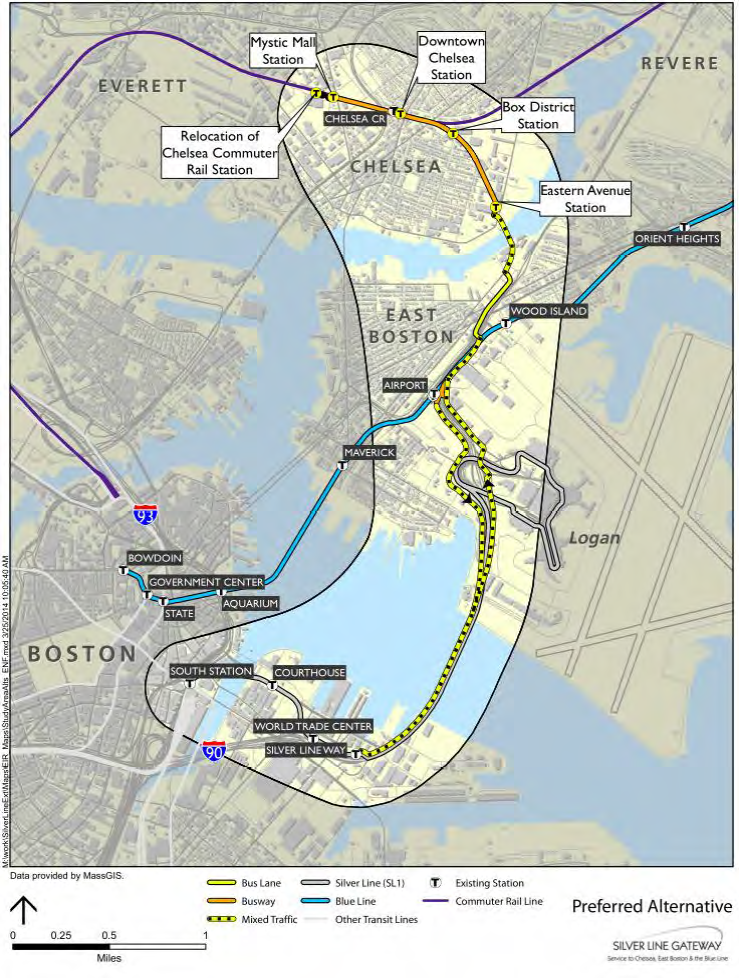Silver Line Gateway Helps Chelsea to Become More Connected
April 26, 2018
On April 21, 2018 the MBTA initiated SL3 service in the new Silver Line Gateway corridor in Chelsea. The concept emerged from the Urban Ring Revised Draft Environmental Impact Report in 2008 and has been advanced by many advocates before and since, leading to construction of Phase 1 in the corridor by MassDOT beginning in 2015. The new service provides enhanced bus service, in a dedicated right-of-way for part of the route connecting from Bellingham Square in the heart of Chelsea to the MBTA Blue Line at Airport Station in less than 15 minutes and to South Station via the Seaport District in as little as 25 minutes, which is much faster that any of the other bus routes serving Chelsea.
These connections provide this improved service to residents of Chelsea, to employees of the many blue collar and white collar establishments in the area, and even for users of the Newburyport/Rockport Commuter Rail in the North Shore connecting from the Chelsea rail station to South Boston and the Financial District.
These benefits help this wide range of users and enhance access to property in Chelsea that includes health care facilities for Massachusetts General Hospital, the new FBI Boston office, and the Massachusetts Department of Revenue, all located in the part of the city leveled by a huge fire in 1973.
The improved access would not have been possible without a series of public investments that have become part of the Silver Line Gateway corridor starting with the Ted Williams Tunnel opened in 1995, the Silver Line tunnel from South Station to South Boston, the new Chelsea Street lift bridge, and the Martin Coughlin Bypass Road in East Boston. Connection to the new Airport MBTA Station is also part of this chain of incremental investments that makes this corridor the newest addition the transportation network of the region.
And this in only Phase 1. Phase 2 will include a new commuter rail station adjacent to the Chelsea SL3 station. In the future there may even be a Phase 3 and Phase 4 with service beside the rail corridor into Everett, perhaps to the future casino connecting more employees to a concentration of jobs, and maybe in Phase 4 the enhanced bus service can be extended to the Sullivan Square MBTA Station and beyond as this corridor becomes more robust. Segment by segment, transportation enhancements can help to realize the objective of increased mobility for a corridor ringing the central city where economic growth is already taking place and looks to continue in the future. Providing service in the Silver Line Gateway Corridor in just the next step, with more to follow. It can only get better.
Authored by: Tom Nally, Planning Director
tnally@abttercity.org




